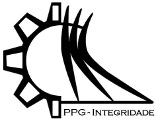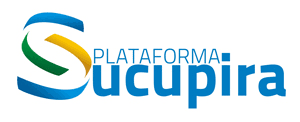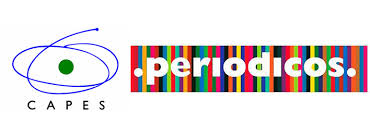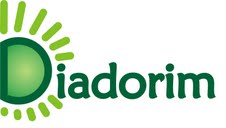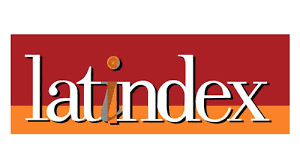Resolução Numérica da Equação de Schrödinger usando o Método da Colocação Ortogonal
Keywords:
Equação de Schrödinger, Colocação Ortogonal, Potencial de Pöschi-Teller, Método NuméricoAbstract
The study of Schrödinger equation configures a field of great interest in science due to numerous applications that can be developed, among then we can cite case studies in solid and molecular physics, nuclear, particle and structures. In this context, the present work aims to propose a methodology for numerically solving the Schrödinger equation using the Orthogonal Collocation Method. This approach consists of rewriting the original partial differential model into an equivalent model constituted by an ordinary differential system. To validate the proposed methodology, two mathematical case studies and one physical considering the Pöschi-Teller potential, are solved. The results obtained demonstrate that the proposed approach is a good alternative for solving this class of problems.
References
FOCK, V. Fundamentals of Quantum Mechanics, Mir Publishers, Moscow, 1978.
GREINER, W. Relativistic Quantum Mechanics, Berlin: Springer, 1990.
GRIFFITHS, D. J.; SCHROETER, D. F. Introduction to Quantum Mechanics. Cambridge University Press. Third Edition, 508 pages, 2018.
MAKOWSKI, A. J.; DEMBINSKI, S. T. Exactly Solvable Models with Time Dependent Boundary Conditions, Physics Letters A, 154(5-6), 217-220, 1991.
ORSZAG, S. Comparison of Pseudospectral and Spectral Approximation, Studies in Applied Mathematics, 51(3), 253-259, 1972.
MARSTON, C.; BALINT-KURTI, G. The Fourier Grid Hamiltonian Method for Bound State Eigenvalues and Eigenfunctions, The Journal of Chemical Physics, 91(6), 3571-3576, 1989.
ROBINSON, M.; FAIRWEATHER, G. Orthogonal Spline Collocation Methods for Schrodinger Type Equation in One Space Variable, Numerisch Mathematik, 68(3), 355-376, 1994.
ARONSTEIN, D.; STROUD, C.. General Series Solution for Finite Square-Well Energy Levels for use in Wave-Packet Studies, American Journal of Physics, 68(10), 943-949, 2000.
MONOVASILIS, T.; KALOGIRATOU, Z. Exponential-Fitting Symplectic Methods for the Numerical Integration of the Schrödinger Equation. Computational Methods In Sciences And Engineering, 37(3), 446-450, 2003.
STRIKWERDA, J. Finite Difference Schemes and Partial Differential Equations, Second Edition, Philadelphia, SIAM, 2004.
PEREIRA, L. C.; FERREIRA, J. V. B.; NASCIMENTO, V. A. Soluções Variacionais e Numéricas da Equação de Schrödinger 1D Submetida ao Potencial de Pöschl-Teller. Revista Principia, 48, 156-168, 2004.
JACKIEWICZ, Z.; ZUBIK-KOWAL, B. Spectral Collocation and Waveform Relaxation Methods for Nonlinear Delay Partial Differential Equation, Applied Numerical Mathematics, 56(3-4), 433-443, 2006.
SANDVIK, A. Numerical Solutions of the Schrödinger Equation, Department of Physics, Boston University, 2013.
ENGLAND, R.; SAVARI, M. On the Pseudo-Spectral Method of Solving Linear Ordinary Differential Equations, Journal of Mathematics and Statistics, 5(2), 136-140, 2009.
KHAN, A.; AHSAN, M.; BONYAH, E.; JAN, R.; NISAR, M.; ABDEL-ATY, A.-H.; YAHIA, I. S. Numerical Solution of Schrödinger Equation by Crank–Nicolson Method, Mathematical Problems in Engineering, 11 pages, 2022.
MODANLI, M.; BAJJAH, B.; KUSULAY, S. Two Numerical Methods for Solving the Schrödinger Parabolic and Pseudoparabolic Partial Differential Equations, Advances in Mathematical Physics, 2022, 10 pages, 2022.
VILLADSEN, J.; MICHELSEN, M. L. Solution of Differential Equation Models by Polynomial Approximation, 1978.
LARANJEIRA, P.; PINTO, J.C. Metodos Numéricos em Problemas de Engenharia Química, Editora EPapers, 316, ISBN 85-87922-11-4, 1a ed, 2001.
Downloads
Published
Issue
Section
License
Copyright (c) 2023 Revista Interdisciplinar de Pesquisa em Engenharia

This work is licensed under a Creative Commons Attribution-NoDerivatives 4.0 International License.
Given the public access policy of the journal, the use of the published texts is free, with the obligation of recognizing the original authorship and the first publication in this journal. The authors of the published contributions are entirely and exclusively responsible for their contents.
1. The authors authorize the publication of the article in this journal.
2. The authors guarantee that the contribution is original, and take full responsibility for its content in case of impugnation by third parties.
3. The authors guarantee that the contribution is not under evaluation in another journal.
4. The authors keep the copyright and convey to the journal the right of first publication, the work being licensed under a Creative Commons Attribution License-BY.
5. The authors are allowed and stimulated to publicize and distribute their work on-line after the publication in the journal.
6. The authors of the approved works authorize the journal to distribute their content, after publication, for reproduction in content indexes, virtual libraries and similars.
7. The editors reserve the right to make adjustments to the text and to adequate the article to the editorial rules of the journal.


